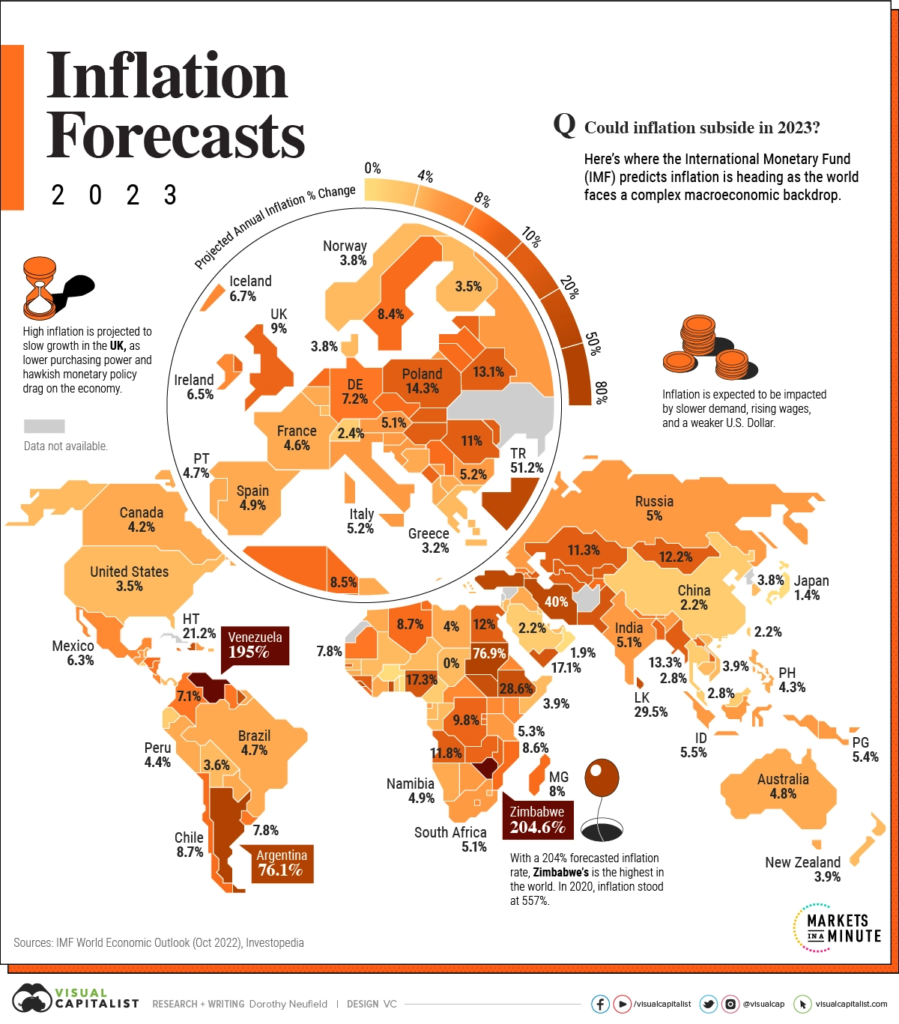Ivalua Named A Leader In The 2025 Gartner Magic Quadrant™ For Source-To-Pay Suites Report
View Report
Ivalua Named A Leader In The 2025 Gartner Magic Quadrant™ For Source-To-Pay Suites Report
View Report
Blog »

In the EMEA region, organizations are increasingly facing an uphill battle against inflation – one that can be particularly hazardous when it comes to making procurement decisions. Unchecked inflation can not only damage profitability and hinder growth opportunities but also impact long-term success.

source: tradingeconomics.com
Inflation Rate in Euro Area averaged 2.16 percent from 1991 until 2023, reaching an all time high of 10.60 percent in October of 2022 and a record low of -0.60 percent in July of 2009. This page provides the latest reported value for – Euro Area Inflation Rate – plus previous releases, historical high and low, short-term forecast and long-term prediction, economic calendar, survey consensus and news. Euro Area Inflation Rate – data, historical chart, forecasts and calendar of releases – was last updated on February of 2023.
Understanding how inflation impacts procurement and then taking action to mitigate its effects is essential for any business looking to stay ahead of the game. One way of doing this is by leveraging Source-to-Pay (S2P)solutions, which can provide procurement with the tools needed to manage their supplier relationships and identify opportunities for cost savings. Let’s explore further.
Inflation affects a number of aspects of a business, including its ability to compete in the market, financial performance, and overall strategy. It also has an impact on procurement teams as they are responsible for managing supplier relationships, identifying opportunities for cost savings, and ensuring that goods and services are delivered on time and within budget.
Price pressure has been a long-standing problem, and inflation can push suppliers’ frustrations to the limit. When demand rises or contracts don’t change with market shifts, prices must increase – causing strain on both buyers and sellers. It’s clear that in today’s environment it pays for companies to maintain flexibility with their supply chain arrangements.
The key for Procurement teams is to stay ahead of inflationary trends so they can anticipate needs and adjust accordingly before problems arise. They should do this by regularly tracking changes in the economy and taking proactive steps to mitigate any potential risks associated with inflation. This could include negotiating more favorable terms with suppliers or renegotiating existing contracts to ensure that prices remain competitive. Additionally, by researching new suppliers every few months or so, they can ensure they’re always getting the best deal possible on the goods and services they need to sustain their operations.
In addition, expectations from customers may also change due to inflationary changes in the market – meaning that procurement teams must be prepared to respond quickly and adjust their strategies accordingly.nofollow”>tradingeconomics.com

One way of mitigating these effects is through S2P solutions – providing visibility into a company’s spend data across all categories of spend and help identify opportunities for cost savings through better supplier management techniques. These options also open up the door for collaboration with suppliers, or holding regular reviews that can help optimize supplier management techniques.
Navigating volatile markets can be a daunting task, but the right insights provide companies with the clarity needed to proactively plan for success. These solutions allow businesses to get an understanding of their current circumstances and track supplier-related risks over time – meaning they are well placed when it comes to anticipating issues before they come up and taking timely action.
Ivalua provides a comprehensive set of integrated solutions that span the entire Source-to-Pay lifecycle. With Ivalua, you can quickly access spend analysis tools to identify areas for cost savings and benchmark current prices against market trends. You can also use its eSourcing solution to create RFPs, receive bids from qualified suppliers, analyze supplier performance and manage contracts in one place.
The Contract Management module allows you to easily track milestones and consumption in real time across multiple agreements. This helps ensure your contracts remain favorable and that all stakeholders comply with the negotiated terms. Finally, Ivalua’s eProcurement solution enables users to create purchase orders quickly and accurately while providing visibility into status updates along each step of the procurement process.
Further, the Invoicing and Payments solutions optimize the invoicing and early payments processes, helping your organization to better manage working capital.
In times of high inflationary pressure, it’s essential that businesses take steps towards mitigating its effects on procurement teams as well as other areas within the organization. By leveraging S2P solutions such as Spend Analysis software or Supplier Management systems, organizations can gain valuable insights into their spending data which will enable them to identify potential cost savings opportunities through better supplier management practices such as collaboration with suppliers or conducting regular supplier performance reviews.
In order to stay ahead of inflationary trends, procurement teams need to be proactive and continuously adjust their strategies. By tracking changes in the economy and taking steps to mitigate potential risks, they can ensure that their operations are sustainable in the long term. Additionally, by regularly researching new suppliers, they can ensure they’re always getting the best deal possible on the goods and services they need.
S2P solutions like Spend Analysis software or Supplier Management platforms can help teams with these tasks by automating many of the manual processes involved and giving them access to data-driven insights that can guide strategic decision-making.
Are you using any tools or solutions to help you manage your spend?
Doing so will ensure that businesses remain competitive during times of economic uncertainty while still maintaining strong supplier relationships throughout the process – allowing them to continue operating efficiently regardless of external conditions outside their control.

Eloise Barnum leads the Global Content initiatives for the EMEA and AMER Product Marketing team at Ivalua. With over 15 years of experience developing digital content and strategy solutions in Tech, SaaS, Public Sector, and Healthcare, she is currently collaborating across multiple marketing and communications teams to identify product marketing trends, produce relevant and engaging content, and develop plans for a cohesive cross-channel experience. A strategic product marketer with pointed focus, her skillset also includes email marketing optimization, sales enablement collateral development, and bylines for multiple thought leadership publications. Eloise graduated from Providence College with a dual degree in Finance and Political Science.
You may also connect with Eloise on LinkedIn